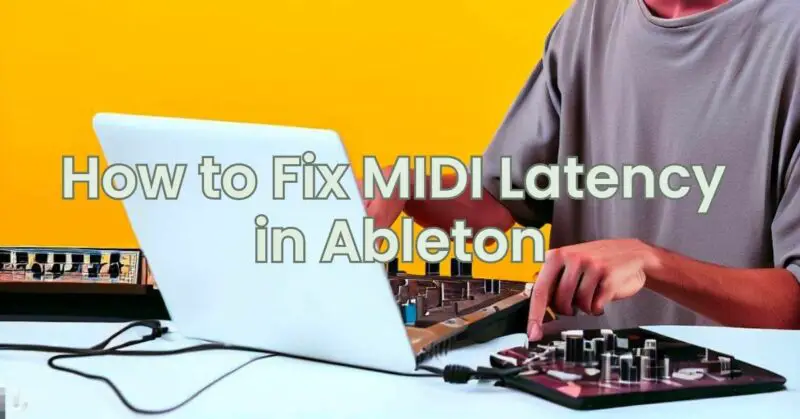MIDI latency, or the delay between triggering MIDI events and hearing the resulting sound, can be frustrating when working in Ableton Live. It can affect the timing and feel of your music, making it challenging to achieve precise and responsive MIDI performances. In this article, we’ll explore some troubleshooting tips to help you fix MIDI latency in Ableton Live and improve your MIDI recording and playback experience.
- Adjust Buffer Size:
The buffer size setting in Ableton Live affects both audio and MIDI latency. By reducing the buffer size, you can minimize the delay between triggering MIDI events and hearing the sound. Here’s how to adjust it:
- Open the Ableton Live Preferences by selecting “Preferences” from the “Options” menu (Windows) or “Live” menu (Mac).
- In the “Audio” tab, locate the “Buffer Size” setting.
- Lower the buffer size to reduce MIDI latency. Start with smaller increments and test the latency after each adjustment to find the optimal balance between low latency and stable performance.
- Use a Low-Latency MIDI Interface:
The MIDI interface you use can impact latency. If you’re experiencing significant MIDI latency, consider using a low-latency MIDI interface. High-quality MIDI interfaces often come with specialized drivers optimized for low latency. Ensure that you have the latest drivers installed for your MIDI interface.
- Optimize MIDI Settings:
Ableton Live offers several MIDI settings that can affect latency. Here are some optimization tips:
- Enable “Reduced Latency When Monitoring” in the Ableton Live Preferences. This setting reduces the monitoring latency when playing virtual instruments.
- Disable unnecessary MIDI effects or plugins. Each active MIDI effect or plugin adds processing time, which can contribute to latency. Disable any effects that are not essential to your MIDI performance.
- Minimize the number of active tracks and devices. Having too many active MIDI tracks or devices can increase the processing load and introduce latency. Disable or freeze tracks that are not in use.
- Use MIDI Quantization:
If you’re experiencing slight timing discrepancies due to MIDI latency, you can use MIDI quantization to align your MIDI notes to a grid. This can help compensate for the latency and ensure your MIDI performances are in time. Here’s how to use MIDI quantization:
- Select the MIDI notes you want to quantize in the MIDI clip editor.
- Enable the “Quantize” feature in Ableton Live, located in the “Clip View” or “MIDI Editor” section.
- Choose the desired quantization value, such as 1/16, 1/8, or 1/4 notes.
- Ableton Live will automatically snap your MIDI notes to the quantization grid, compensating for any timing discrepancies caused by latency.
- Consider Hardware Solutions:
In some cases, MIDI latency may be caused by limitations in your hardware setup. If you’ve tried the software-based solutions and are still experiencing significant latency, you may consider hardware solutions such as a MIDI merge box or a dedicated MIDI performance controller that offers low-latency response.
By implementing these troubleshooting tips, you can minimize MIDI latency and improve the responsiveness of your MIDI recordings and performances in Ableton Live. Remember that the extent to which you can reduce latency depends on various factors, including your computer’s processing power, MIDI interface, and the complexity of your project.
Experiment with different settings and configurations, and regularly update your software and drivers to ensure optimal performance. If you continue to experience latency issues, consult Ableton’s support resources or reach out to their technical support for further assistance tailored to your specific setup.

